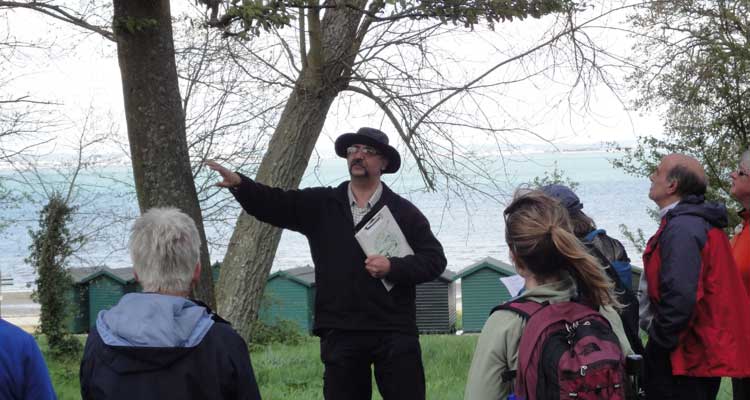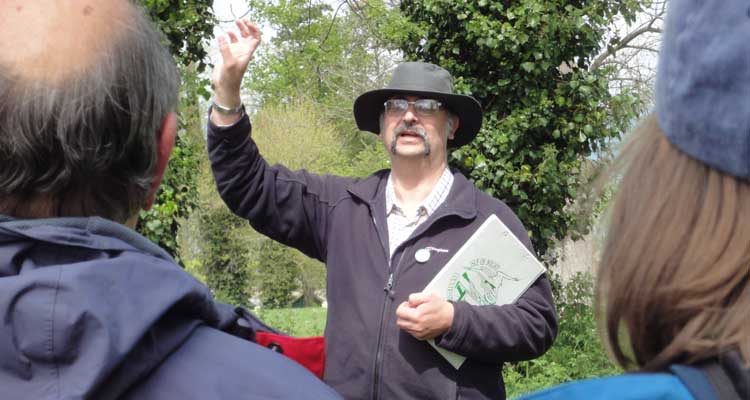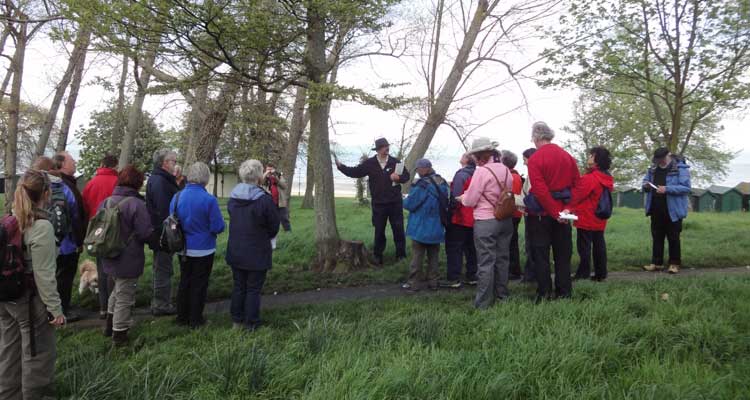How to lead the perfect guided walk – part 3
- Complaining about the Mainland - 17th August, 2024
- New island designation – is it just greenwash? - 26th April, 2024
- Police and Crime Commissioners – a solution or a problem? - 21st April, 2024
You read part 1 and part 2, now finish the set with this last section where you can find out some ideas for keeping your commentary flowing; some important health and safety advice; and lastly how to finish the walk.
Part 3 – Delivering the walk
So, we now get to the part you’ve been hoping for, how to actually walk and talk at the same time. There are a few things you can do, a few you must do, and a few more that you must not. You should always:
- Walk the route beforehand at least once, even if you are familiar with it. This will enable you to be aware of any fallen trees, puddles, flytipping or other recently-arrived phenomena which you might wish to avoid. It’s also good to get your mind running over what you’re going to say.
- Put aside some time to plan your actual talk – don’t rely on just telling people things at random as you spot them. Whilst experienced presenters can get away with this sometimes, even the most seasoned guide will admit that time spent in preparation can often make the difference between a good and a great walk. And if you’ve done the same presentation twenty times before, maybe it’s time you put something new into it to give yourself a bit of a kick-start.
Here are a few tricks you could consider if you’re looking for inspiration:
- Do some research offsite – talk to people who know about the history or ecology of the area, or read around old books and leaflets. Don’t over-do this one, but a few facts or, better still, entertaining stories, are always helpful.
- Write yourself some cue-cards. If you’ve been on a presentation course you know about these already. Get little index cards and write on each one a series of short reminders of things to say and talk about. Don’t write a script! For a walk, you could have a series of cards for a number of locations you want to stop at. If you need to write more than a card’s worth, you’re writing down too much.
- Use some props. You probably have in your office or education centre a few items of interest from the site in question, which can be handed around at the right time. Fossils, historical or archaeological artefacts, or old photographs can be not too heavy and usually safe enough to keep in your rucksack. Maps are always interesting if you’re talking about how things used to be.
Make sure you don’t end up doing these:
- Reading from a script! This is the kiss of death. If you read from a script at all, or even memorise a script parrot-fashion (and yes, some people do) you may as well give up and do the whole walk in mime. It will sound stilted and just wrong in the context of a walk. You must be relatively informal and flexible about your presentation – this is not the same as a lecture or slideshow. Your audience will also want to interact with you, and you must let them do so. Especially in a small group you must be ready to have more of a discussion than a presentation if that’s the way it’s going.
- Going off the beaten track – either literally or metaphorically. By contrast to the problem of scripts, it’s often tempting to wander from the route or subject of the walk. Don’t do either. Keep to your planned route unless you have a very good reason to deviate; and keep the talk on the subjects that you have prepared and advertised – after all, that’s why the people came. If people want to go a different way, let them. But don’t go with them. If one particular walker wants to talk about something else they can do so with you afterwards if needs be.
- Getting into an argument: all too easy if one particular person wants to monopolise the discussion. That’s not what walks are for. It can be hard to deal with and you’ll have to use your judgement as to the best approach, but just be alert for this and don’t let one person spoil it for the others. Remember – you’re in charge.
Health and Safety
All walk organisers should ideally take all possible precautions to guard against accidents on guided walks. In practice this is not always possible. Depending on the circumstances it is not always clear-cut who is liable in law if someone is injured on a guided walk, and insurance cover does vary so if you have any concerns you should contact your insurers (or your employers if you are working for an organisation) and ask them about liability in such a situation. They should be able to clarify the situation as it applies to you, and reassure you. It’s usually no big deal but it’s certainly worth knowing the situation. Usually insurance for a local authority will extend to volunteers leading walks by arrangement with the council, too. It is certain that if a leader takes members of the public into danger, it would be negligent not to warn them, and give the option of not going. Do not normally take guided walks along anything but the most sensible paths. In cases where someone would obviously not be suitable for the route, such as a frail old person, it is quite acceptable to tell that person that the walk would not be suitable for them. If they come, that is their choice. A good idea from a safety and management point of view is to have one person or more helping the leader. One leader is the minimum requirement for a guided walk, but when events get popular and involve more than about 20 people, it is time to think about getting more people to help. If you’ve got a helper, they should walk at the back and perform the function of ‘sweeper’, making sure nobody falls behind and warning you if you’re going too fast or they can’t hear you at the back. Note that if you don’t have a helper, you’re going to have to do those things for yourself!
Finishing the walk
Make sure everyone knows it’s finished. Don’t let them just drift off, but make a bit of a climax of it. Thank them all for coming, tell them that this is the end of the walk, and explain how to get back to the start point if you’re not there already. Give out any leaflets, and any other relevant material. If you have them and there is no wind, it can be good to spread a range out on a van and let people choose. Give a small ‘trailer’ for any up and coming events and of course for your next guided walk. If donations are appropriate, make it clear how they are to be offered and what they will go towards. Some people will expect to pay so if it is free, say so explicitly so they don’t feel embarrassed. Hang around until the visitors start to go, because some people love to come up and talk to you after the walk. This is a valuable part of the walk because not everyone is confident talking in a group. So try not to rush off unless you have to do so. Anyway, you probably need a rest too before the next job. Now it’s over! Relax, wave your visitors off, get out your thermos for a well earned cuppa… then start planning the next time!



